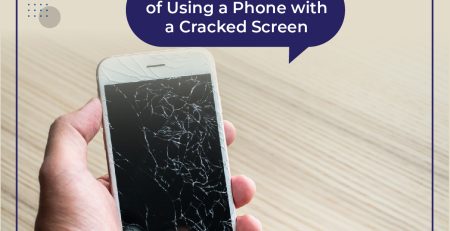8
Sep
Water-resistant vs. Waterproof: What’s the Difference When it Comes to Phones?

Understanding the Lingo: Dive Deeper into the Tech World
It’s a rainy afternoon, and you’re navigating the bustling streets while trying to hold onto your umbrella and text your friend to let them know you’re running late. Suddenly, your phone slips from your hand and into a puddle. If your phone is water-resistant or waterproof, should you panic?
Well, before we answer that question, it’s crucial to understand the difference between a “water-resistant” and a “waterproof” phone. While the two terms are often used interchangeably, they mean different things when it comes to the level of protection your phone offers against water exposure. Let’s delve into the specifics to clear up the confusion.
Water-Resistant: The Light Shield
When a phone is labeled as “water-resistant,” it means that the device can withstand some exposure to water but has its limitations. Manufacturers usually design these phones with a special coating or seal to protect against splashes, accidental spills, or light rain. However, they are not made to be submerged in water for extended periods.
Rating Systems
You might have noticed ratings like IP67 or IP68 on your phone’s specifications. The ‘IP’ stands for “Ingress Protection,” and the numbers that follow indicate the level of protection against dust and water.
- The first number (6, in this case) indicates dust protection level and usually ranges from 0 to 6.
- The second number pertains to water resistance and typically varies between 0 and 8. The higher the number, the better the water resistance.
For example, an IP67 phone can be submerged in water up to 1 meter for about 30 minutes, whereas an IP68 phone can withstand submersion up to 1.5 meters for the same amount of time. Always check these ratings to know what kind of protection you’re getting.
Waterproof: The Heavy Armor
On the other hand, “waterproof” implies that the device is impervious to water, regardless of the duration or depth of submersion, within the manufacturer’s defined limits. However, it’s important to note that no phone is 100% waterproof. Even devices that claim to be waterproof come with specific conditions, often involving time and pressure constraints.
Caveats and Precautions
1. Time and Pressure Limits
Even if a phone claims to be waterproof, there’s usually a depth and time limit for how long it can be submerged. Exceeding these limits will lead to water damage.
2. Warranty Limitations
It’s essential to read the fine print when it comes to your phone’s warranty. Many manufacturers do not cover water damage, even if the phone is labeled as water-resistant or waterproof.
3. Wear and Tear
The effectiveness of water resistance or waterproofing can degrade over time due to daily wear and tear. If you’ve dropped your phone a few times or it has some cracks, the protection may not be as reliable.
To Sum Up
While water-resistant phones offer a degree of protection against accidental splashes and quick dips, waterproof phones provide a higher level of protection for more intense interactions with water. Either way, it’s essential to understand your phone’s limitations and to take appropriate precautions to prevent water damage.
At CellphoneFix.net, we’re here to help you navigate the complex world of phone protection and repair. If you find yourself with a water-damaged phone, don’t hesitate to reach out to us for expert assistance!
Happy calling and stay dry!
If you found this article helpful, make sure to check out other informative articles on digital safety and tech tips at CellphoneFix.net.
Disclaimer: The information provided in this blog is for informational purposes only. Always refer to your device’s manual and warranty for accurate and personalized advice.
RELATED
Posts
The Best Tech Gadgets for Your Next Road Trip
When wanderlust calls, a road trip can be the perfect way to explore new destinations and enjoy the freedom of the open...
Steps You Should Take Right Now to Keep Your iPhone Data Safe
In the age of digital connectivity, our iPhones have become an integral part of our lives. From cherished memories in photos to...
What You Need to Know About Broken Phone Insurance
In today's fast-paced world, smartphones have become integral to our lives. We use them for communication, work, entertainment, and even as personal...
5 Common Myths About the Batteries in Your Favorite Tech
Battery technology has come a long way since the advent of portable devices. Yet, many misconceptions persist about how to get the...
How to Spot a Scam Email or "Phishing" Email: A Guide to Staying Safe Online
In today's digital age, scam emails, also known as "phishing" emails, are an unfortunate part of life. These deceptive messages are designed...
How to Keep Your Computer Running Smoothly with Updates
Introduction In our modern digital age, computers are a necessity for work, entertainment, and communication. But, just like any other machine, they require...
Initial Steps to Take If You Suspect Malware on Your Mobile Device
Introduction We all rely heavily on our mobile devices for a variety of tasks, from checking emails to online shopping and even controlling...
Top 5 Risks of Using a Phone with a Cracked Screen
Introduction Smartphones have become an essential part of our daily lives. From checking emails and browsing the web to capturing memorable moments, we...
School Starts Now: 10 Tech Gadgets Every College Student Needs
With the academic year kicking off, it's important to set yourself up for success. College students today have a myriad of tasks...









